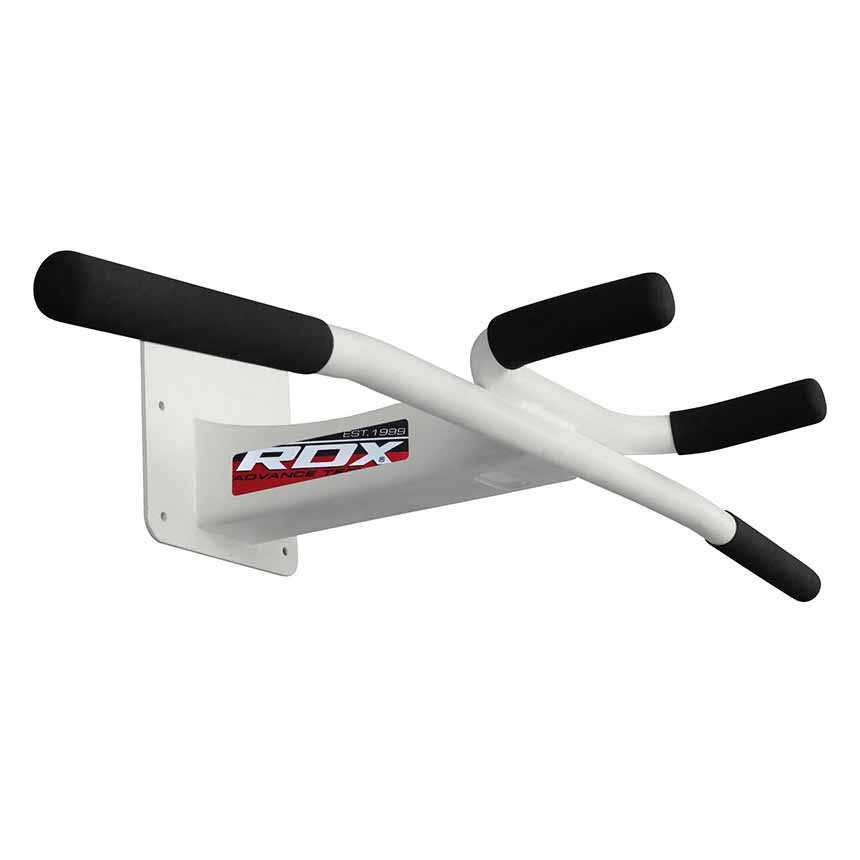Pull up bar is an excellent gym equipment for upper body workouts. Though most of the athletes use it for pull-ups, pull up bars are used in various other exercises from chin-ups to L-sits.
Related: 5 Ways To Use Pull Up Bars In Workout Session
Pull-up bars are very convenient and effective to use in the compound exercises. Compound exercises are extremely important as they target multiple muscle groups in a body. Specifically, pull-ups go a long way to target your back and biceps. Pull-up bars are ideal for bodybuilders and strength trainers.
Related: Build Up your Strength With Gym Pull Up Bar
Now this one is pretty smart move:
Types Of Pull Up Bars
You can find two types of pull up bars in the market: permanent and removable.
1. Removable Pull Up Bars
Removable pull up bars are quite inexpensive, lightweight, and easy to install without drilling. You can mount them inside a doorway easily. However, removable bars are less efficient and don’t support much weight.
2. Permanent Pull Up Bars
Permanent pull up bars require drilling or fixed mounting via sockets. They are tougher to install as compared to the removable pull up bars. But, permanent pull up bars have the capability to support more weight than the removable models. Difficult to install but last longer!
If you don’t have one, you can buy RDX wall mounted heavy duty padded pull up bars that can support more than 150 kg weight.

Step-Wise Guide To Install Pull Up Bar
We have listed down 5 easy steps to help you install pull up bar all by yourself.
Step#1
The first and foremost step is to figure out the position where you want to install pull up bar. There are various different types of permanent pull up bars on the market such as:
- Joist-mounted
- Ceiling-mounted
- Wall-mounted
- Corner-mounted
- Doorway-mounted
You must be very careful about this step as each type of installation will require a different set of hardware and brackets. You don’t need to worry as the hardware will be provided to you by the sellers.
Step#2
Take out the brackets of the pull-up bars and measure out the distance required to mount them. This step is based on the previous step where you determined the position of your pull up bar.
Use a pencil to mark the drilling point of the pilot holes for brackets. You may also require the need of using a stud finder to locate a stud, floor joist, or rafter.
You must mount the brackets in the wood, metal, or concrete to make sure that it can easily handle your weight while exercising.
Step#3
Once you have marked the location of brackets, drill the pilot holes. Pilot holes would make it easier to install pull up bar mounting bolts. Also, they avoid the cracking in floor joist or stud due to fatigue or regular intense training.
If you have bought a removable pull up bar with two sets of mounting brackets, repeat the steps 2 and 3. Mark two different locations for both brackets: one high up in the doorway and the other slightly lower for short people.
Step#4
Use an adjustable wrench or the socket set to tighten the mounting bolts into the pilot holes. RDX pull up bars come with the pack of bracket-mounting screws that can be easily fastened using driver drill.
Step#5
Now that you have installed pull up bar mounting brackets successfully, fit the bar in it. Before using it, give a tug to make sure that is properly secured. Else, you might end up on the floor face-down.
Hang from the pull-bar then and make sure that it is able to tolerate your weight. If you have survived the pull up bar, you are ready to begin your pull up bar workouts. Here are the few to get started with.





